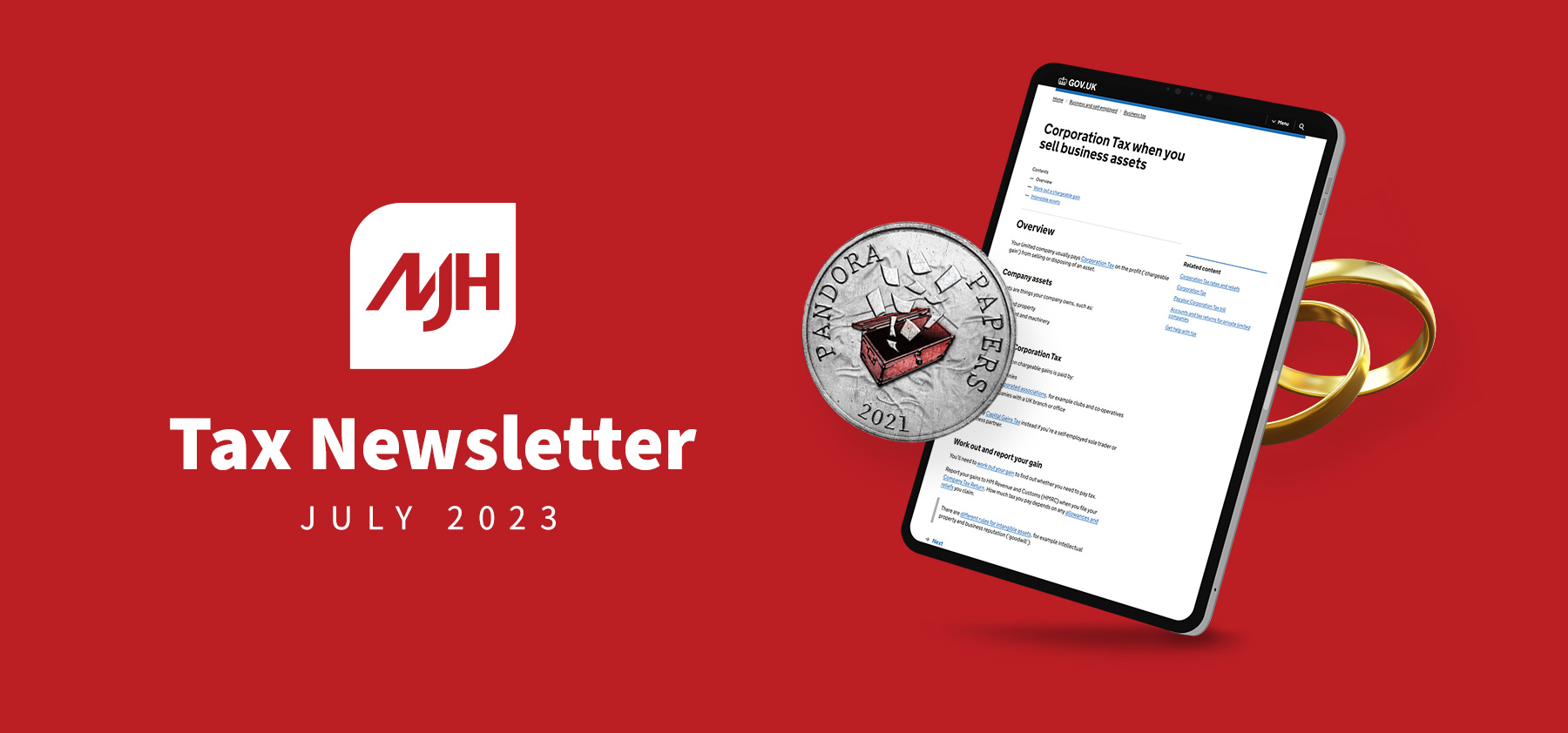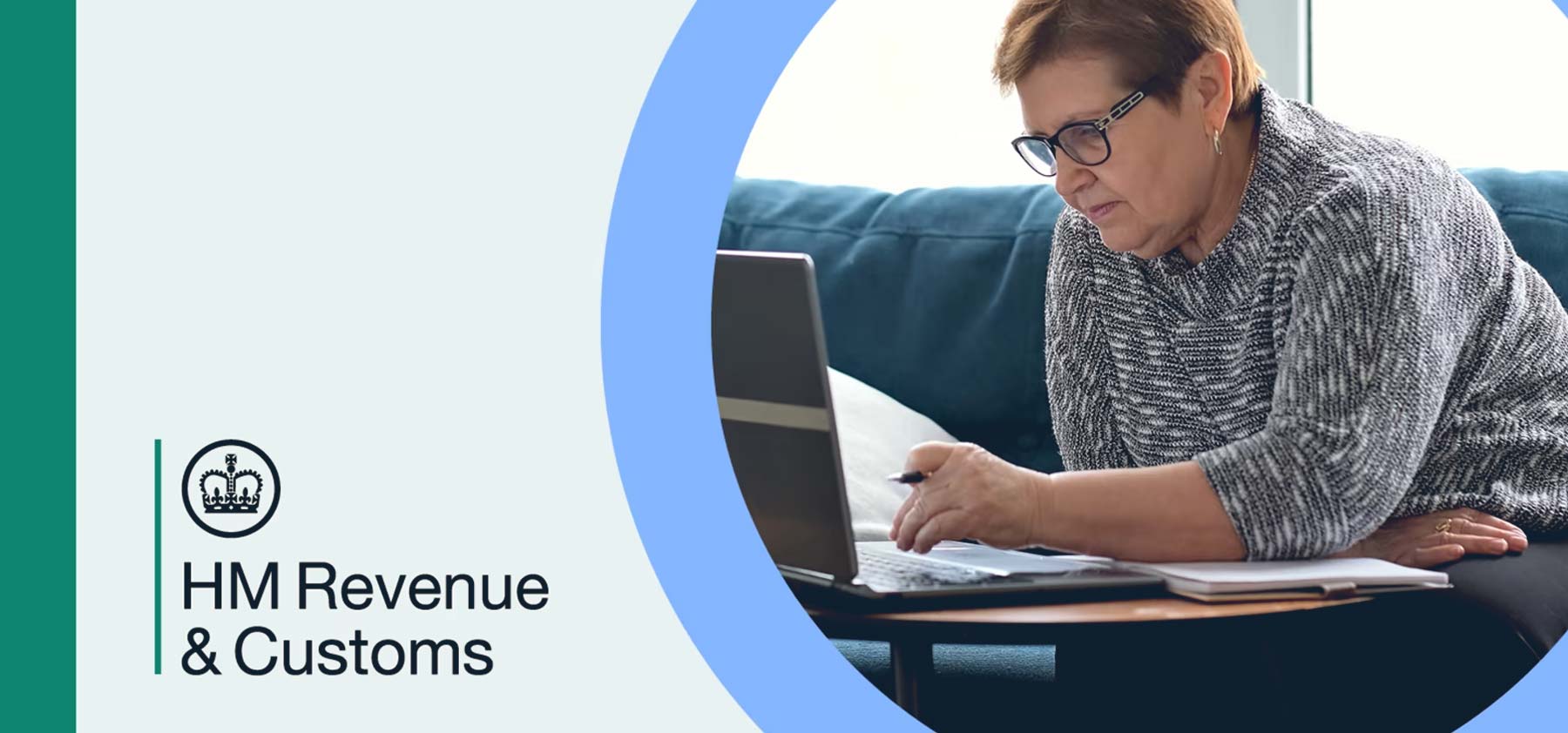
Corporation tax on capital gains
The main rate of corporation tax rose from 19% to 25% on 1 April 2023 for companies with profits over £250,000. The small profits rate of 19% applies where company profits don’t exceed £50,000 for the year. Between those profit thresholds an effective marginal rate of 26.5% will apply.
But what happens if the company makes a large profit (capital gain) on selling an asset in the accounting period that straddles 1 April 2023?
The corporation tax rules require the portions of the accounting year which fall in the two financial years: FY22 (commencing 1 April 2022) and FY23 (from 1 April 2023) to be treated as separate accounting periods. The profits of the whole accounting year, including any capital gains, need to be apportioned between those periods falling in FY22 and in FY23.
The thresholds at which the small company rate and marginal rate kick in are shortened according to the length of the deemed accounting period falling in FY23. The thresholds may also be divided by the number of associates a company has, plus itself.

Example:
In the year to 30 September 2023 a property company makes profits from its let properties of £200,000. It also sold a building on 30 April 2023 making a capital gain of £100,000.
The total taxable profits of £300,000 for the year to 30 September 2023 are split across the two accounting periods falling in FY22 and FY23 on a day-count basis:
– FY22: 182/365 x £300,000 = £149,589 chargeable at 19%
– FY23 183/365 x £300,000 = £150,411 chargeable at 25%
For FY23 the upper profit threshold is reduced to £125,342 (£250,000 x 183/365), so the property company is not eligible for the small profits rate or marginal relief. Any associated companies would further reduce the upper profit threshold.
Voluntary NIC payment deadline extended again

In April 2023, we gave you the good news that the government had extended the deadline for paying voluntary National Insurance Contributions (NIC) to fill gaps in an NIC record which arose in the years 2006/2007 to 2016/17, from 5 April 2023 to 31 July 2023. Now that later deadline is fast approaching the government has extended the payment period once more to 5 April 2025.
Voluntary NIC is usually paid as class 3 NIC, but where the taxpayer is self-employed or lives and works abroad, class 2 NIC can be paid instead. The extension for voluntary payments of NIC applies equally to class 2 and class 3 NIC.
What’s more the voluntary NIC payments can be made at the 2022/23 rates for all years from 2006/07 to 2022/23, i.e.:
– Class 2 NIC: £3.15 per week
– Class 3 NIC: £15.85 per week
These NIC gaps became more important because the number of qualifying years needed for a full state pension increased from 30 years to 35 years for those who reach State Pension Age (SPA) on and after 6 April 2016, and became entitled to the new “flat-rate” state pension. Hence the government permitted those individuals to fill gaps in their NIC records with voluntary class 3 NIC beyond the normal six-year period.
This extension to the payment the period only applies to men born after 5 April 1951 and women born after 5 April 1953, as those born earlier were entitled to the old state pension which has different payment conditions.
The NIC gap problem can also affect parents who would be entitled claim child benefit, but didn’t submit a claim to avoid getting caught by the High Income Child Benefit Charge (HICBC). If the parent claims child benefit, then opts out of receiving the child benefit payment, they are given an NI credit if they are not also in paid employment or self-employment. However, where child benefit is not claimed, the NI credit is not given, and an NIC gap can arise.
If you want to make a one-off payment to fill any gaps in your NIC record you need to include an 18-character reference number so the payment is allocated to the right NIC record. But to get that reference number you need to ring HMRC on: 0300 200 3500.
HMRC nudges those named in Pandora Papers

The Pandora Papers consists of 11.9 million leaked documents from 14 offshore financial service companies. This information was gradually released by the International Consortium of Investigative Journalists from October 2021 onwards.
HMRC has been reviewing this data and is now writing to around 600 people named in those papers. This is only the first tranche of the total number of taxpayers who HMRC will contact as a result of this information coming to light.
The HMRC letter asks the taxpayer to review their disclosure of offshore income or gains on their tax returns, and warns that if there is an under-declaration the penalties could amount to 200% of the unpaid tax. The individual could also face a criminal prosecution if they make a dishonest disclosure.
If you receive this HMRC letter there are two routes you can use to make a disclosure:
– Where there has been deliberate mis-statement of taxable income or gains use the Contractual Disclosure Facility (CDF) and Code of Practice 9 (COP 9).
– Where there has been no deliberate offshore non-compliance use the Worldwide Disclosure Facility (WDF).
Using the COP9 route will allow HMRC to recover tax, interest, and associated penalties as far back as 20 years. However, you would have protection from criminal prosecution for tax offences so long as you make a complete, open, and honest disclosure of all the deliberate understatements on your tax returns.
Making either type of disclosure is a complicated process. You should take advice from a suitably qualified tax investigation specialist before making your disclosure.
How to claim the Marriage Allowance

The marriage allowance is £1,260 of the personal allowance which is available for transfer between spouses or civil partners. But this amount can only be transferred where the recipient is taxed at the basic rate (20%) or less (starter, basic or intermediate rates for Scottish-resident taxpayers).
The marriage allowance is given as a tax reducer in the hands of the recipient at 20%, so it worth £252 per year (£1,260 x 20%). This value is fixed until at least 6 April 2028, as the personal allowance has been frozen until that date by the current government.
The “claim” for the marriage allowance must be made by the person who is surrendering part of their personal allowance, which is counter intuitive as you are asking to give away part of your tax-free allowance. The person who receives the additional allowance doesn’t claim it, they just passively receive the extra tax benefit.
The individual who surrenders the marriage allowance must have some or all of their personal allowance unused, or have a zero-tax liability due to the operation of other allowances on top of their personal allowance.
The quickest way to apply for the marriage allowance is through your online personal tax account (www.gov.uk/personal-tax-account).
If you submit a self -assessment tax return you can make the claim for the marriage allowance on your tax return, but only for that tax year.
A third way to claim is to use the downloadable form: MATCF. This form can be used to apply for the marriage allowance for the current tax year and to back-date the claim for the four previous tax years, where the conditions applied.
Once a claim for the marriage allowance is accepted, it will be applied for all future tax years, leaving the surrendering spouse with a reduced personal allowance of £11,310. If the circumstances of either spouse/ civil partner change the claim for the marriage allowance must be cancelled.
July Questions and Answers

Q1. I quit my job in July 2022 and became self-employed from September 2022. I started to pay class 2 NIC for my self-employed trade with effect from 1 September. Will the 2022/23 count as a qualifying year towards my state pension?
A: Probably not as you will not have paid NIC for every week of the year. But you need to check your NIC record on your personal tax account (www.gov.uk/personal-tax-account) once you have submitted your tax return for 2022/23. Do this as soon as possible. You will then be able to pay class 2 NIC for any missing weeks, once you know how big the gap is.
Q2. I have applied to register my café business for VAT from 1 July, but the VAT number hasn’t arrived. What should I show on invoices from that date?
A: – You should charge your customers the basic price plus 20% VAT from 1 July, but you can’t show the VAT amount separately on the invoice. As you are a retail business, and your individual invoices are likely to be £250 or less (including VAT) you are not required to issue full VAT invoices. You should issue simplified VAT invoices, which must include the following: – Your business name and address
– VAT registration number (say ‘VAT number applied for’ until you get it)
– date of the sale
– description of the goods or services supplied;
– total amount payable including VAT;
– for each rate of VAT chargeable, the gross amount payable including VAT; and
– the VAT rate applicable.
Q3. My building business is winding down as I prepare to retire. I want to close my company, which has gross payment status for the Construction Industry Scheme (CIS) and carry on any further work as an individual sole trader. Will the CIS gross payment status carry over into my sole trader business?
A: When a sole trader builder incorporates their business their CIS gross payment status (if they have that) carries over into the new company. As your company is entirely owned by you, and you are the only director, HMRC will view you as a sole trader and your company, as a continuing business for CIS purposes. So, the CIS gross payment status should carry on into your self-employed trade.
July Key tax dates

5 – Employers need to agree any PAYE Settlement Agreement (PSA) for 2022/23 with HMRC. This can now be achieved with an online application.
– Letting agents acting for non-resident landlords must make return of the rents paid to landlords and tax deducted in 2022/23 (form NRLY). If no letting agent is acting the tenant must make the return.
6 – Employers need to submit the report of expenses and benefits (P11D) and class 1A NIC due on those benefits (P11d (b)) online for 2022/23. There is no option to submit this information on paper.
– Employers must supply their relevant employees with copies of the P11D information for 2022/23.
– Employee share scheme annual returns need to be submitted through the ERS to report events in 2022/23.
– Any employee share schemes put in place in 2022/23 must be registered by this date.
– Where employee termination payments and benefits have been provided with a value of £30,000 or more for any one employee, or where non-cash benefits included in the package, a report must be submitted to HMRC.
– Directors and employees who wish to ‘make good’ the cost benefits provided in 2022/23 to avoid being taxed on those items must do so by this date. This applies to the provision of: cars, vans, road-fuel, non-cash vouchers, accommodation, credit token and benefits treated as earnings.
– Where a close company has provided beneficial loans to a director, the company must elect by this date for all loans to be treated as a single loan to calculate benefits in kind.
7 – Where non-cash benefits have been provided in 2022/23 to retired employees under employer-financed retirement benefits scheme a return needs to be made to HMRC.
19 – Non-electronic payment of Class 1A NIC for 2022/23 on benefits returned on a declaration of expenses and benefits (form P11D(b)) must reach HMRC by this date.
21 – Payment of Class 1A NIC made by an approved electronic payment method must reach HMRC by this date.
31 – The second payment on account of self-assessed income tax and Class 4 NIC for 2022/23 is due.
– All tax credit claims for 2022/23 must be confirmed and renewed for 2023/24 if required.
 Book a No-obligation Discovery Call
Book a No-obligation Discovery Call




 Book a Free Discovery Call
Book a Free Discovery Call

